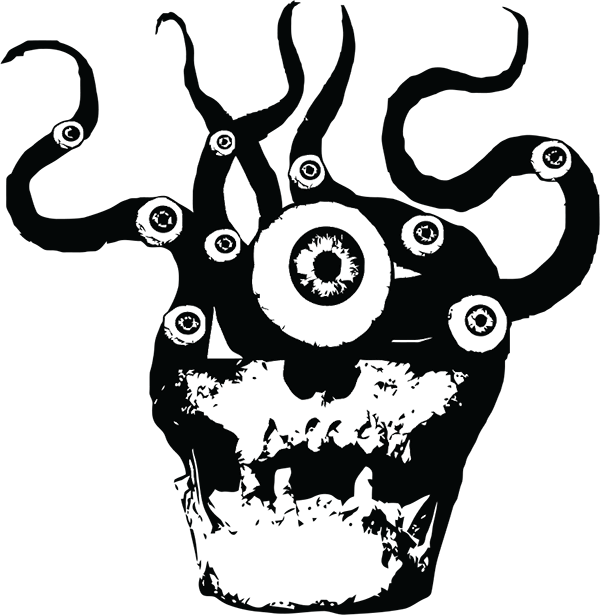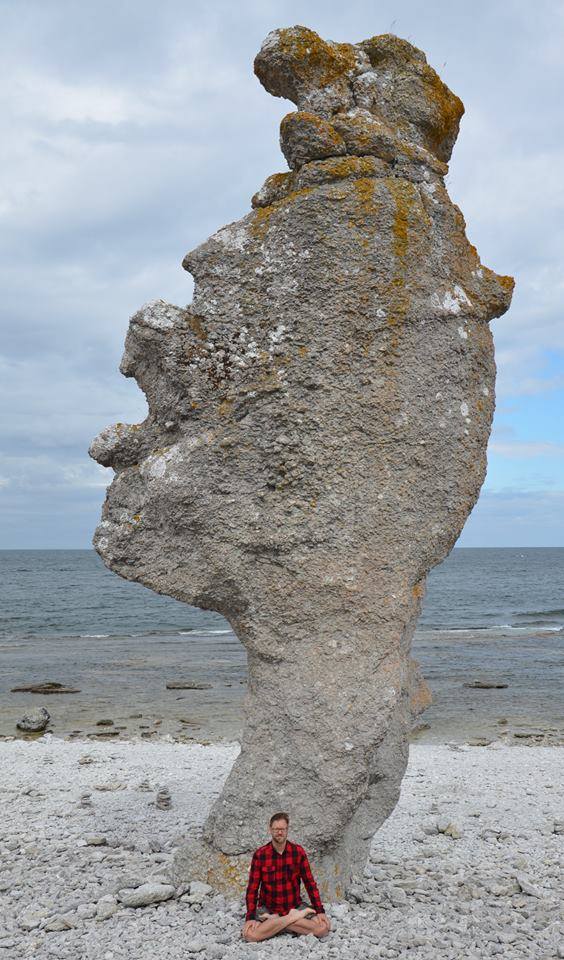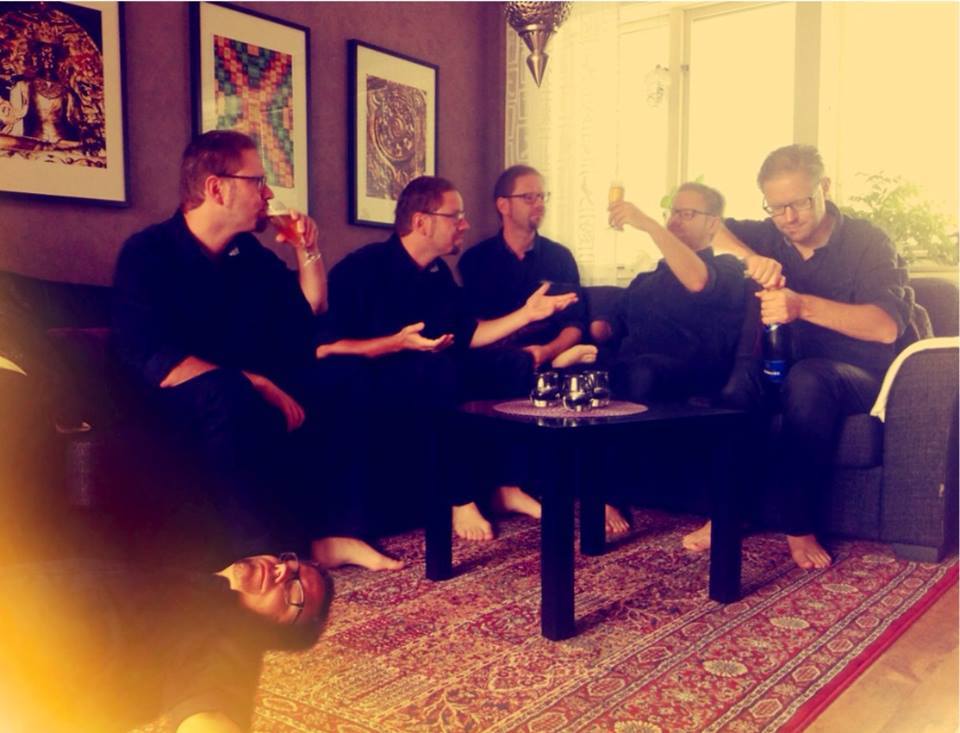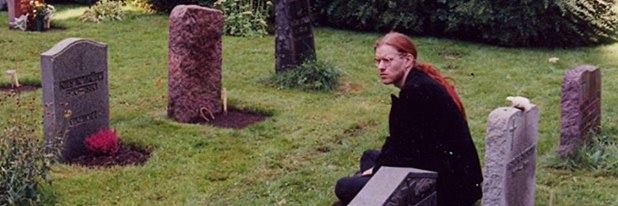Morbid
2017-02-08
by Niklas Göransson
Dr. Schitz was the bass player of Swedish underground legends Morbid. A scholar of the psychoanalytical and adventurer of the arcane – he shares his unique perspective on the dangers and delights of formative years serving the Devil’s music.
This article can also be found in Bardo Archivology Vol. 1, a printed anthology with selected features from the online archive. Additional content includes IRKALLIAN ORACLE, AOSOTH, NIFELHEIM, UNPURE, ABIGOR, NUMINOUS, CLANDESTINE BLAZE, RIDE FOR REVENGE, AKITSA, MALIGN, NORDVIS, ARMAGEDDA, EHLDER, and DEATHSPELL OMEGA – all presented in ambitious aesthetics with plenty of custom artwork. More information here.

– Like most from my generation of metalheads, I started out with New Wave of British Heavy Metal; 70s staples such as BLACK SABBATH and early-80s heavy metal like DIO. By ’83 or ‘84, thrash had found its way into my life. First EXCITER, on to “Ride the Lightning” (METALLICA), and then of course came VENOM – I can still vividly recall the first time I heard them, it sounded so genuinely forbidden and dangerous.
Back in those days, he points out, there were no established death or black metal genres.
– “Black Metal” was an album, not a concept – what we were listening to was essentially thrash and speed metal. Truth is, I don’t own any real death metal albums, didn’t much care for it, I’m an 80s guy; I don’t listen to very much at all from after 1989… I passed on the death metal wave that started in Sweden that year and really took off in ’91, it was never my thing at all. I’m certainly not claiming there to have been no good records during the 90s and forward, it’s simply that what I listened to in the 80s made such an impression on me that no later metal could ever match. I try to make virtue of my vice, the fact that I’m so narrow-minded when it comes to music. I’m still amazed by how impressionable my brain was back then.
The only substantial addition to his musical diet since then was when his friend, musician and Subliminal Sounds label manager Stefan Kéry, introduced him to ’outsider music’– which he says made a profound impression on him. I was previously unfamiliar with this genre so after our conversation, Dr. Schitz compiled a Spotify playlist for me.
– Most people just get really fucking annoyed by it though – it drives my wife crazy, and she grew up listening to MERCILESS and BATHORY.
I’m siding with Mrs. Schitz, this stuff is absolutely ghastly. I have shared the Spotify playlist he compiled here, if anyone else wants to subject themselves to it.

These days Dr. Schitz is both somewhat of an esoteric authority in Sweden as well as a working psychologist with his own practice – so it’s from these perspectives I’m curious about what benefits and hindrances he sees in adults who grew up devoted to black metal.
– I’m not sure how representative my experiences are for others, but I feel incredibly fortunate to have made the friends I did through this music. The best I’ll ever have, no doubt. I remember Erik Danielsson (WATAIN) remarking how impressed he was by the stark loyalty among Dead‘s old friends, he has an incisive mind and I think that was a keen observation. The deep bonds formed back in those days were with people of sincere, honest, and dependable character. Black metal can certainly be a greatly supportive environment for disturbed young men, whereas for others it can serve as… how should I put it, the music could be one way of processing the darkness by manifesting great art or acting it out. One can just as likely descend into a destructive obsession with the dark itself, creating a downward self-perpetuating spiral. Some will claim this to be part of the grand black metal plan – its actual purpose even. I don’t know. I fail to see the point of it, which, admittedly, is the essence of nihilism.
What about general social skills?
– I would speculate that it postpones maturity a bit, though I’m mostly talking about myself here. Many of us struggled with learning how to socialise without drinking heavily and a few have yet to get the hang of it. The metal scene of the 80s… personally, I found the emotional sincerity appealing. There was room for the ugly and dark, for aggression. I also appreciate the anti-intellectual aspects – throwing your friend into the wall, downing vodka – this heedless celebration of regression becomes a sort of primeval expression that I find very, very compelling.
This, says Dr. Schitz, is what a great gig is all about.
– Loud music, the beats and the heat and the alcohol and drugs… adrenaline and headbanging – the psychotic denial of death and decay and old age. To me, this is all highly atavistic, which I find to be a wonderful counterweight to the anaemic culture we find ourselves living in. I cherish this raw honesty, the camaraderie. In general there’s this… I’d like to say code of honour, or at the least a basic sense of common decency. Note that contemporary Western society is the only culture anywhere in the world, at any time, that neither believes in spirits nor has ways of relating to them. Thus – in this secular world – it’s remarkable to find a sub-culture with such heavy emphasis on magic and the divine.
Having remained only in the black metal periphery since the early 90s, Dr. Schitz admits to not being entirely up to date on the various esoteric currents presently permeating the scene.
– The genre’s metaphysical aspects never appealed to me; I’ve never been interested in Satanism, nor do I have any interest in God or anything of the kind. There’s clearly significant creativity and a lot of effort, dedication, and hard work put into it. Some of it is remarkably well executed, for sure, but personally – and maybe this comes down to my own blockages – I’m not moved by it.
The black metal listening experience, he says, is not one of spiritual rapture for him – it won’t be opening gates of the soul, or facilitating any ethereal traversing.
– Black metal can be vicious and it can be a beautiful. However – and this is only my opinion – listening to digitally recorded music is not ritualistic. Any real power conjured is lost as soon as it’s digitised, reduced into ones and zeroes. For others it might be different and I have no problems with that, it’s just a personal thing.
Dr. Schitz once told me in a previous conversation – in reference to metal performers who beseech forces they might not fully comprehend – that ’if you keep making prank calls on the astral line, sooner or later someone will pick up’.
– Surely, those who actually believe in spirits and autonomous energies will also recognise the very real danger of dabbling with them? It’s not hard to see people in the black metal scene who, if you entertain these notions, are under detrimental demonic influence. Me saying this – it sounds like I’m in league with television evangelist Bob Larson. Funnily enough we share similar perspectives on some of these things, though we hold radically different views on much else. But before delving deeper into this subject, one has to be clear on the perceived ontology of evil spirits; it depends if one sees them as non-integrated aspects of the psyche, or external free-roaming intelligences… or both, for that matter. This perception of malevolent entities is particularly sophisticated when it comes to the Tibetan tradition.
In Tibetan Buddhism, the spiritual practice Dr. Schitz subscribes to, the demonic is depicted in a variety of forms; often in purely psychological terms, sometimes in mythical nomenclature, and occasionally as entirely literal interpretations.
– Although very few musicians seem to be actually performing conscious spiritual work – they are in various ways reaching out, extending invitations, and opening themselves up to the dark. I dare say we’ve already seen plenty of results of this rather naïve approach. It is my firm conviction that the universe is full of energies and spirits, most of whom are not benign. It’s an astral jungle out there and you’d better watch your psychic back, especially if exposing yourself to the bad guys. That said, there is no ‘out there’; the very substance and medium of the experience is your own mind, which has neither demarcation nor any exact position or extension. It literally can’t be pinpointed.
Would you say that this was what happened with Pelle Dead?
– If you define demons as volatile and dualistically fragmented patterns of consciousness and energies, covering the spectrum ranging from ‘external’ or intrapsychic – then yes. This is usually the case with suicide. The past being past, I think a more pertinent question is if some hardcore Dead fans are subjecting themselves to these kinds of forces, vastly underestimating the consequences.
I sense a return to Bob Larson territory.
– I suppose so but all the signs are certainly there in some individuals. Being in contact with demons is not problematic per se, but one should certainly be aware and in control of what’s being interacted with. Of course, it’s really none of my business but sometimes I do wonder what’s brewing out there.

One could say that Pelle ‘Dead’ Ohlin cemented the foundations of Scandinavian black metal aesthetics, with the corpse paint he pioneered back when MORBID were still together and then introduced into MAYHEM. Not only the facial design, but also how to frame it with body-language and decomposing attire adorned with various intricate details. His suicide and subsequent mythos sealed this portrayal in the genre permanently, with everyone wanting to look like a man so genuine he truly embraced death.
– One of the greatest tragedies of Pelle’s premature demise was that he was never given the time to grow, develop and explore his highly original artistic sensibilities. That’s a tremendous shame, and it’s no wonder that people underestimate him as an artist, not just as an amazing musician. We have so little left, such a dreadful loss.
Where do you think his aesthetic inspiration came from?
– King Diamond of course, early Alice Cooper was a big one, and then basically anything morbid and absurd. Black metal proper wasn’t as rigidly perceived back then, which goes back all the way to VENOM; it was a lot more anarchistic, almost punkish and playful. Though not necessarily a criticism as much as personal preference, this is something missing in later developments. Cartoons and horror films would’ve been another influence. Bear in mind that exposure to any form of alternative sub-culture was minimal for teenagers growing up in mid-80s Sweden, I struggle to properly convey how scarce it was. We had the records of course, but beyond that in terms of films, books and magazines – there were few means of getting hold of anything even remotely obscure.
Back in those days, coming across any form of occult literature in Sweden was near-impossible.
– For instance, say you wanted to order something like The Satanic Bible; first you had to purchase a check, post it to the US, and then have the book shipped across the Atlantic by boat. We’re talking eight, ten, twelve weeks – if even arriving at all. One also had to be well-connected to have the faintest clue what to order in the first place, let alone where to do it from.
Perhaps this is why H.P. Lovecraft’s Cthulhu mythos became so integral to early death and black metal – it was some of the only literature, fact or fiction, which dealt with the occult and could be easily obtained by Western teenagers. A testament to this would be the pre-internet popularity of the so-called Simon Necronomicon, a fantastical Lovecraft-inspired grimoire published in 1977.
– Indeed, if you look at early non-English proto-black metal you’ll find that the themes were rather limited and often devoid of many subjects which later became staples in latter-day metal lyrics. The MORBID lyrics contain very few standard references; rather, Dead drew on his considerable artistic sensibilities to convey deeply personal visions in his lyrics. Given his limited English, I’m still in awe of what we were able to produce.
While aspects of both popular and underground culture had some influence, Dr. Schitz believes that Pelle’s main inspiration came from his defining childhood moment; his brush with the Reaper. More about this in the No Fashion article in Bardo Methodology #1.
– Having had that near-fatal encounter in his younger years, it may well have been a significantly contributing force – this would account for Pelle’s ingenious and entirely uncontrived gestalt of death. It was almost a part of him, he could bring himself into this emotional… he, more than anyone else, could have enjoyed and emphatically related to a person suffering from Cotard’s syndrome. That’s the best way I can put it.
A rare disease of the mind, Cotard’s delusion renders the stricken individual with the presumably incorrect conviction of being dead. A common health issue related to the condition is starvation, since the afflicted sees little reason to feed an expired vessel.
– He was never able to resolve the enigma of always putting his underground integrity on the forefront, and then at the same time… you have to reach out – he wanted to tour, to record and release vinyl. But he refused to cater to the masses, and how do you resolve that paradox? This was something Dead was never able to do in either MORBID or MAYHEM. Unlike our old friends from Stockholm, who were all out touring by 1990, he was never even presented with an offer to decline. Had Pelle remained in Sweden instead of moving to Norway in early 1988, MORBID would most likely have been courted with record deals. Not for being better than anyone else, but simply because just about every active Stockholm death metal band was.
Do you think he’d find any joy in the hypothetical afterlife, if he knew of his legacy?
– He had such a knack for contempt – of which he would’ve been vibrating for being featured in a post-Burton METALLICA video, performing alongside the brother of the Home Alone protagonist. At the same time, he had a dark sense of humour and could laugh at a lot of things so why not? I can almost hear his characteristic laughter, radiant with disdain. I hope you are well and enjoy your trip, wherever you are Pelle… we sure do miss you.

This article can also be found in Bardo Archivology Vol. 1, a printed anthology with selected features from the online archive. Additional content includes IRKALLIAN ORACLE, AOSOTH, NIFELHEIM, UNPURE, ABIGOR, NUMINOUS, CLANDESTINE BLAZE, RIDE FOR REVENGE, AKITSA, MALIGN, NORDVIS, ARMAGEDDA, EHLDER, and DEATHSPELL OMEGA – all presented in ambitious aesthetics with plenty of custom artwork. More information here.



